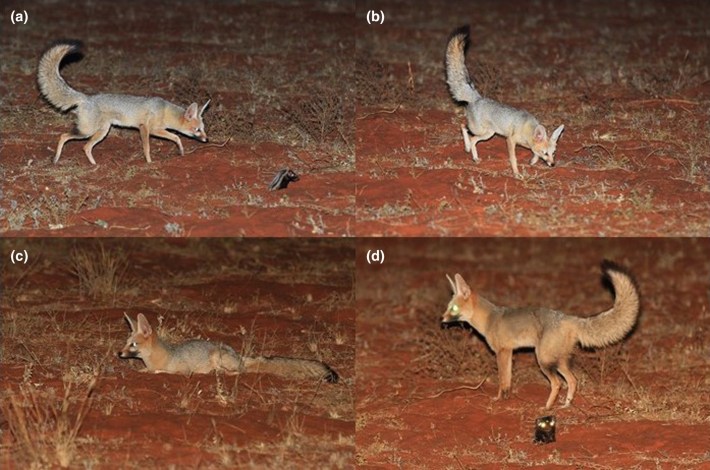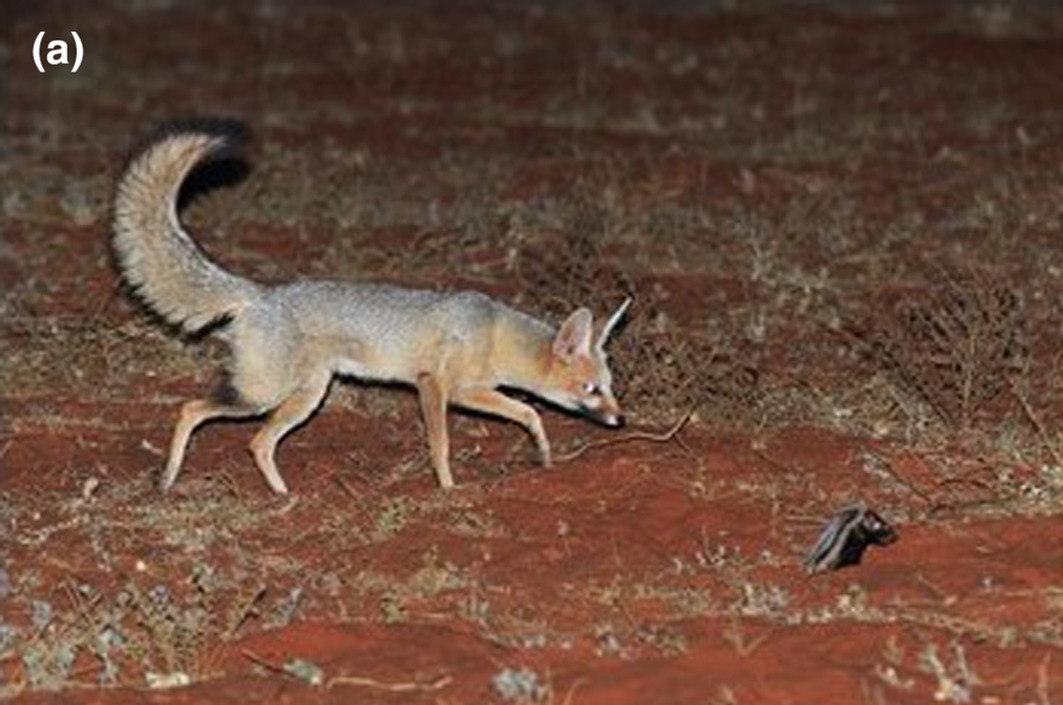Nothing beats a good interspecies friendship. A gorilla petting a kitten? A sheep with his little groundhog pal? A rescued pig who was raised by eagles and adorably keeps trying to fly? (I'm still waiting on this last one but I figure it's just a matter of time.) It's a testament to nature's creativity and ingenuity when animals get together, and now we've got a brand-new example.
In a paper published Saturday in the Journal of African Ecology, researchers describe the first-ever observations of Cape foxes and striped polecats working together on the hunt, making them one of just a few mammalian duos that we know to regularly team up. Here's how it works: The polecat (which looks like a skunk but as a mustelid is more closely related to weasels and badgers) will enter the underground burrow of its targeted prey, usually a rodent of some sort. The fox waits outside. If the prey is in the burrow, the polecat flushes it out, where the fox will capture it. If the prey is out foraging, it'll dash for its burrow at the sight of the fox, into the polecat's waiting teeth.
The researchers spent four years in the Tswalu Kalahari Reserve in South Africa and recorded 16 direct observations of a Cape fox and striped polecat pair, 12 reports from other observers, and one instance of camera trap footage. Here's the little guys out and about:

The researchers suggest the behavior is a form of true mutualism, an ecological interaction that benefits both species, rather than kleptoparasitism, in which one hangs around just to steal food from the other. Both the Cape fox and striped polecat catch more food by working in tandem than they would working alone, the researchers theorize, taking advantage of the fox's superior prey-detecting senses and the polecat's ability to enter the prey's burrow. Teamwork!
What's particularly interesting is that the researchers recorded more than a dozen observations of the two species running together, while not engaged in hunting. This to me, a biology knower, suggests that they're buds and enjoy hanging out.
While this is the first recorded association between these specific species, other pairs of animals have been known to work together in similar ways: the coyote and the American badger; multiple fox species and American badgers; and (possibly) jackals and honey badgers. In all cases, it's a canid and a mustelid, and in all cases the hunting strategy is the same: one little guy to flush out the prey, one bigger guy outside to catch it.
Here's an example of the most studied team-up, the dynamic duo of coyote and badger. Tell me they're not pals:
The paper's authors, Wendy Panaino, Sandra Lai, and Alexander Sliwa, write that "to understand how common these associations are and what the drivers for such partnerships are requires more investigation." I vote that science drops everything else and diverts all funding to finding out which animals are chums.






